A Fibrinogen-Mimicking, Activated-Platelet-Sensitive Nanocoacervate Enhances Thrombus Targeting and Penetration of Tissue Plasminogen Activator for Effective Thrombolytic Therapy
- PMID: 35864062
- PMCID: PMC11468879
- DOI: 10.1002/adhm.202201265
A Fibrinogen-Mimicking, Activated-Platelet-Sensitive Nanocoacervate Enhances Thrombus Targeting and Penetration of Tissue Plasminogen Activator for Effective Thrombolytic Therapy
Abstract
The development of a fibrinolytic system with long circulation time, high thrombus targeting, efficient thrombus penetration, effective thrombolysis, and minimal hemorrhagic risk remains a major challenge. Herein, inspired by fibrinogen binding to activated platelets in thrombosis, this article reports a fibrinogen-mimicking, activated-platelet-sensitive nanocoacervate to enhance thrombus penetration of tissue plasminogen activator (tPA) for targeted thrombolytic therapy. This biomimetic nanothrombolytic system, denoted as RGD-Chi@tPA, is constructed by "one-pot" coacervation through electrostatic interactions between positively charged arginine-glycine-aspartic acid (RGD)-grafted chitosan (RGD-Chi) and negatively charged tPA. Flow cytometry and confocal laser scanning microscopy measurements show targeting of RGD-Chi@tPA to activated platelets. Controlled tPA release triggered by activated platelets at a thrombus site is demonstrated. Its targeted fibrinolytic and thrombolytic activities are measured in in vitro models. The pharmacokinetic profiles show that RGD-Chi@tPA can significantly prolong circulation time compared to free tPA. In a mouse tail thrombus model, RGD-Chi@tPA displays efficient thrombus targeting and penetration, enabling a complete vascular recanalization as confirmed by the fluorescence imaging, histochemical assay, and laser speckle contrast imager. Consequently, RGD-Chi@tPA induces a substantial enhancement in thrombolysis with minimal hemorrhagic risk compared to free tPA. This simple, effective, and safe platform holds great promise for the development of thrombolytic nanomedicines.
Keywords: chitosan; fibrinogen-mimicking nanocoacervate; targeted thrombolysis; thrombus penetration; tissue plasminogen activators.
© 2022 The Authors. Advanced Healthcare Materials published by Wiley-VCH GmbH.
Conflict of interest statement
The authors declare no conflict of interest.
Figures
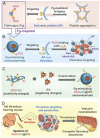
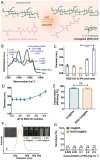

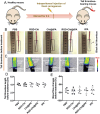
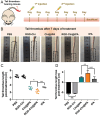
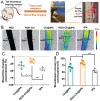



Similar articles
-
Fibrinogen-mimicking, multiarm nanovesicles for human thrombus-specific delivery of tissue plasminogen activator and targeted thrombolytic therapy.Sci Adv. 2021 Jun 2;7(23):eabf9033. doi: 10.1126/sciadv.abf9033. Print 2021 Jun. Sci Adv. 2021. PMID: 34078604 Free PMC article.
-
An activated-platelet-sensitive nanocarrier enables targeted delivery of tissue plasminogen activator for effective thrombolytic therapy.J Control Release. 2019 Apr 28;300:1-12. doi: 10.1016/j.jconrel.2019.02.033. Epub 2019 Feb 23. J Control Release. 2019. PMID: 30807804
-
Thrombus-targeted nanocarrier attenuates bleeding complications associated with conventional thrombolytic therapy.Pharm Res. 2013 Jun;30(6):1663-76. doi: 10.1007/s11095-013-1011-x. Epub 2013 Mar 7. Pharm Res. 2013. PMID: 23468049
-
Fibrinogen binding to activated platelets and its biomimetic thrombus-targeted thrombolytic strategies.Int J Biol Macromol. 2024 Aug;274(Pt 1):133286. doi: 10.1016/j.ijbiomac.2024.133286. Epub 2024 Jun 21. Int J Biol Macromol. 2024. PMID: 38908635 Review.
-
Novel and emerging therapies: thrombus-targeted fibrinolysis.Semin Thromb Hemost. 2013 Feb;39(1):48-58. doi: 10.1055/s-0032-1328935. Epub 2012 Oct 3. Semin Thromb Hemost. 2013. PMID: 23034825 Review.
Cited by
-
pH-Responsive Theranostic Colloidosome Drug Carriers Enable Real-Time Imaging of Targeted Thrombolytic Process with Near-Infrared-II for Deep Venous Thrombosis.Research (Wash D C). 2024 May 29;7:0388. doi: 10.34133/research.0388. eCollection 2024. Research (Wash D C). 2024. PMID: 38812529 Free PMC article.
-
Cold atmospheric plasma-enabled platelet vesicle incorporated iron oxide nano-propellers for thrombolysis.Mater Today Bio. 2023 Nov 25;23:100876. doi: 10.1016/j.mtbio.2023.100876. eCollection 2023 Dec. Mater Today Bio. 2023. PMID: 38089433 Free PMC article.
-
Emerging Elastic Micro-Nano Materials for Diagnosis and Treatment of Thrombosis.Research (Wash D C). 2025 Feb 28;8:0614. doi: 10.34133/research.0614. eCollection 2025. Research (Wash D C). 2025. PMID: 40028043 Free PMC article. Review.
References
-
- Collen D., Lijnen H. R., Blood 1991, 78, 3114. - PubMed
-
- Raskob G. E., Angcahisuksiri P., Blanco A. N., Buller H., Gallus A., Hunt B. J., Hylek E. M., Kakkar A., Kostantinides S. V., McCumber M., Ozaki Y., Wendelboe A., Weitz J. I., Thromb. Res. 2014, 134, 931. - PubMed
-
- Marder V., Blood Rev. 2001, 15, 143. - PubMed
-
- Bode C., Runge M. S., Haber E., Clin. Cardiol. 1990, 13, 375. - PubMed
Publication types
MeSH terms
Substances
Grants and funding
LinkOut - more resources
Full Text Sources
Medical

